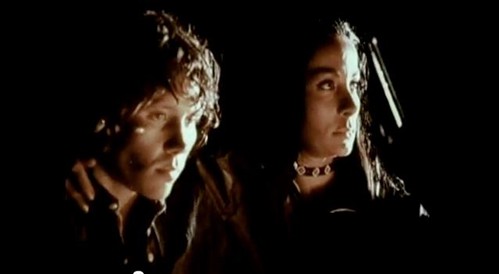
Using mannequins for the
background.
At first you might think this is a
totally crazy idea, but I have practical experience in the use of
mannequins and can assure you that they work very well. When I made
"The Merchant of Venice" for American television, there were scenes
in which seventy of the extras were in fact mannequins mixed in
with the real extras in the forefront, closer to the camera.
Although it may seem incredible, there's no way of guessing that
not all of them are breathing!

The advantage they represent isn't
purely financial. When it comes to tricky camera moves or changing
focus, it is very difficult to teach even the professional extras
how to remain exactly on their marks. A lot of time is wasted
placing them in the right position and making them stay there. It
must be taken into account that in many of these scenes, the real
set decoration is almost exclusively comprised of human beings. It
is very important that we don't see more than the occasional and
carefully chosen item of the house. It must also be realized that
all of this material is filmed by crews of documentary cameras,
experts in cinéma-vérité and so forth. This means that the
spotlights used to film the leading actors are not hidden but
rather appear on screen, fixed on the leading characters. Finally,
since most of this filming is done with long and fixed lenses,
people in the background will not only be in darkness but also very
diffused.

I have the costs from France of the
type of mannequins needed. Although I haven't got the figures with
me now, the total cost is very reasonable. We could either bring
the mannequins from France or get them in Spain. I must clarify
that we would never frame any of the extras below knee-level, at
least in the case of the mannequins. Therefore they will be on
solid bases to support them while allowing them to be easily moved
from place to place.
For those scenes in which
mannequins are used, we calculate the need for human extras will be
reduced by 30 or even 50%.
[...]
ORSON WELLES